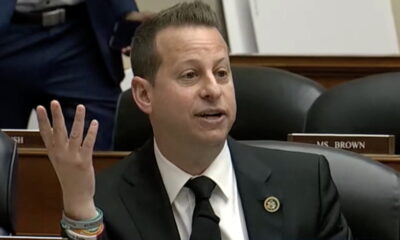Post DOMA: Now That Gays Can Marry, What About D-I-V-O-R-C-E?
Professor Katherine Franke takes on the thorny issues of how divorce between gay and lesbian couples will confront stereotypical notions of gender and what that could mean for gay and lesbian families
Lesbian and gay people and their families have much to celebrate in the Supreme Court’s rulings in the DOMA and Proposition 8 cases. While not going so far as to declare a constitutional right for same-sex couples to marry, Justice Kennedy’s decision in Windsor called out DOMA as an unambiguous expression of animus toward gay people, decrying it for writing “inequality into the entire United States Code.â€
But winning at the Supreme Court doesn’t settle the problem of injustice in one fell swoop. The NAACP’s 1954 victory in the Brown v. Board of Education case didn’t put an end to racism in public education. Instead, African American families were confronted with the difficult, often violent task of integrating their children into school districts that had been structured around racial separation in communities that presupposed their children’s inferiority.
Rolling out the promise of equality secured for same-sex couples in the Windsor decision will no doubt be met with push-back and hostility, but the process is likely to engender far less violence and resistance than the implementation of the Brown decision did.  In fact, we already have quite a bit of experience integrating same-sex couples into the institution of civil marriage – 12 states and the District of Columbia have lifted the ban on gay marriage and tens of thousands of same-sex couples have gotten marriage licenses as a result.
So what can we expect in the aftermath of the Supreme Court’s ruling?
For many lesbian and gay couples this transition from exclusion to inclusion has been long-sought: a marriage license delivers the state’s imprimatur to relationships that have suffered second class status before the law for no reason other than bias.
For others though, the transformation from partners to husbands of husbands and wives of wives isn’t going so smoothly. Most straight couples have always seen marriage as the natural end point of a serious committed relationship.
Not so with same-sex couples.
Long accustomed to organizing our intimate lives well outside law’s reach, our relationships have been less influenced by the magnetic pull of the marital form.   Gay and lesbian couples have innovated a range of commitments to one another: sometimes monogamous, sometimes not; sometimes sharing assets, sometimes not; sometimes committing forever, sometimes not, sometimes sharing parenting responsibilities, sometimes not. Many of us treasure the freedom that living outside marriage provides while also recognizing the stigma and discrimination that laws barring same-sex marriage created.
Now that marriage is increasingly possible for same-sex couples, new spouses will find themselves governed by a set of legal rules that allocate rights and responsibilities and distribute and redistribute property in ways that were developed with heterosexual relationships in mind.
After all, marriage has been one of society’s most gendered institutions.
In the bad old days, husbands were expected to be breadwinners while wives stayed home, took care of the kids, and kept the household running. Feminist reforms in the last 50 years pushed marriage law to come to terms with the gender inequality that flows from these rigid roles of husbands and wives.   Modern rules of support within marriage and rules of distribution upon divorce are designed to correct the underlying structural gender inequality that left wives penniless and husbands well-off after divorce.
In a relationship where the wife stays home to take care of the kids and the house while the husband builds a career, the old rules would treat his investment in his career and his wage labor market power as “his†to take with him at the end of the marriage, while the wife’s failure to invest in her own labor market power would be a “cost†she would have to absorb herself. Modern rules of equitable distribution treat the wife’s work at home as integral to the husband’s ability to better his career, and as such divorce law now considers his wage labor market power as a marital asset to be divided fairly between the two spouses.  The fairness of modern rules that take note of gender-based role specialization in marriage seem hard to deny, but it is worth noting that such a rule takes the gendered specialization as a given and then corrects for it afterwards, at divorce – thus incentivizing a division of labor where one spouse works at home and the other works at the office. But how will the rules that are sensitive to the disadvantage women often suffer in marriage impact same-sex couples when they chose to marry – or more aptly – divorce?
Most of the political discussion within the gay community has centered on gaining the right to enter the institution of marriage, putting off the uncomfortable conversation about what should happen if the marriages end. To be sure, marriage brings with it a bundle of rights and responsibilities, not to mention social respect and dignity, which many in the gay community yearn for deeply.  But getting married also means living by the rules of marriage and divorce: ending a relationship will no longer be a privately negotiated matter.  Divorce law sets the rules of separation and judges decide how those rules are applied.
At the point of divorce, family court judges will be inclined to apply the rules of equitable distribution of the marital assets in ways that are familiar to them – such as ensuring that the weaker party, usually the “wife,†is not unduly disadvantaged. Some gay men have resisted this kind of gendering when their marriages end, choosing to forego entitlement to an even share of the couple’s wealth upon divorce. They’d rather leave the relationship with their masculinity intact than accept a payment that might turn them into a “wife.â€
On the other hand, some lesbians welcome the legal advantage of being treated like the wife. Consider two women who have lived together for many years, each contributing to joint household expenses but otherwise keeping their finances separate. When they marry they make clear in a pre-nuptial agreement the desire to continue this arrangement. Yet when they break up, the law of divorce tends to favor the lesbian wife who argues that the pre-nuptial agreement should be ignored—the law would, instead, push the couple to divide both members’ assets more evenly.
In heterosexual divorces, there is a presumption against the enforceability of pre-nuptial agreements where the weaker party, usually the wife, waives her right to equitable distribution or community property. Should there be the same presumption in a same-sex divorce? In a same-sex couple, would a court be justified in overriding a wife’s “choice†to forgo a claim on her spouse’s assets? As a matter of policy, judges in divorces see their job as looking out for the weaker party, but the spectre of same-sex couples marrying raises the hard question of what it means to be “weaker” in a context where gender-based power is not creating an unequal playing field for the two parties negotiating rights and responsibilities in a marriage
Those in our community who regard marriage as entailing an inflexible set of rules that equalize resources available to the divorcing couple might support having divorce law override a pre-nup that is less generous to the lesbian wife.
Yet others, myself included, worry that the diverse, non-traditional relationships and families we formed before marriage was a possibility will be shoe-horned into a one-size-fits-all kind of justice, slotting gay men and lesbians into the pre-determined gender roles of marriage: husbands and wives. Gay and lesbian couples prize how we’ve disorganized gender roles in our relationships in ways both mundane and significant: there usually isn’t one partner who just happens to do the driving, manage the family’s finances, and teach the kids how to the throw a ball, while the other just happens to do the grocery shopping, get the food on the table, and clean up runny noses. We mix it up. It’s not obvious that family law is equipped to adjudicate fair separations of same-sex couples when it encounters the ways we’ve busted out of gendered notions of relationship, responsibility, and family.  Even worse, modern divorce law may end up gendering us into “wives†and “husbands†because that’s all it is equipped to recognize.
Even if gender-based inequality does not characterize same-sex relationships to the same degree as heterosexual relationships, there are other forms of inequality between same-sex couples about which the law should take note, such as differences in race, class, and citizenship status. Marriage law can be a force for good in checking any inclination the more advantaged party may have to exploit their spouse’s vulnerability. But family court judges are less comfortable addressing these inequities, preferring to focus on eradicating gender-based disadvantage.
The Supreme Court’s marriage decisions signal a momentous and pivotal moment in American history: one that repudiates public policy motivated by open dislike of gay people. Yet these cases ought to motivate a range of thorny conversations within the gay community about what we expect from marriage and what marriage expects from us.
The image of a marriage equality rally at the U.S. Supreme Court is courtesy of Flickr
A version of this article was originally published on July 3rd, 2013 in The Nation.
 Katherine Franke is the Isidor and Seville Sulzbacher Professor of Law and Director of the Center for Gender and Sexuality Law at Columbia Law School.
Katherine Franke is the Isidor and Seville Sulzbacher Professor of Law and Director of the Center for Gender and Sexuality Law at Columbia Law School.
Â

Enjoy this piece?
… then let us make a small request. The New Civil Rights Movement depends on readers like you to meet our ongoing expenses and continue producing quality progressive journalism. Three Silicon Valley giants consume 70 percent of all online advertising dollars, so we need your help to continue doing what we do.
NCRM is independent. You won’t find mainstream media bias here. From unflinching coverage of religious extremism, to spotlighting efforts to roll back our rights, NCRM continues to speak truth to power. America needs independent voices like NCRM to be sure no one is forgotten.
Every reader contribution, whatever the amount, makes a tremendous difference. Help ensure NCRM remains independent long into the future. Support progressive journalism with a one-time contribution to NCRM, or click here to become a subscriber. Thank you. Click here to donate by check.
 |






















